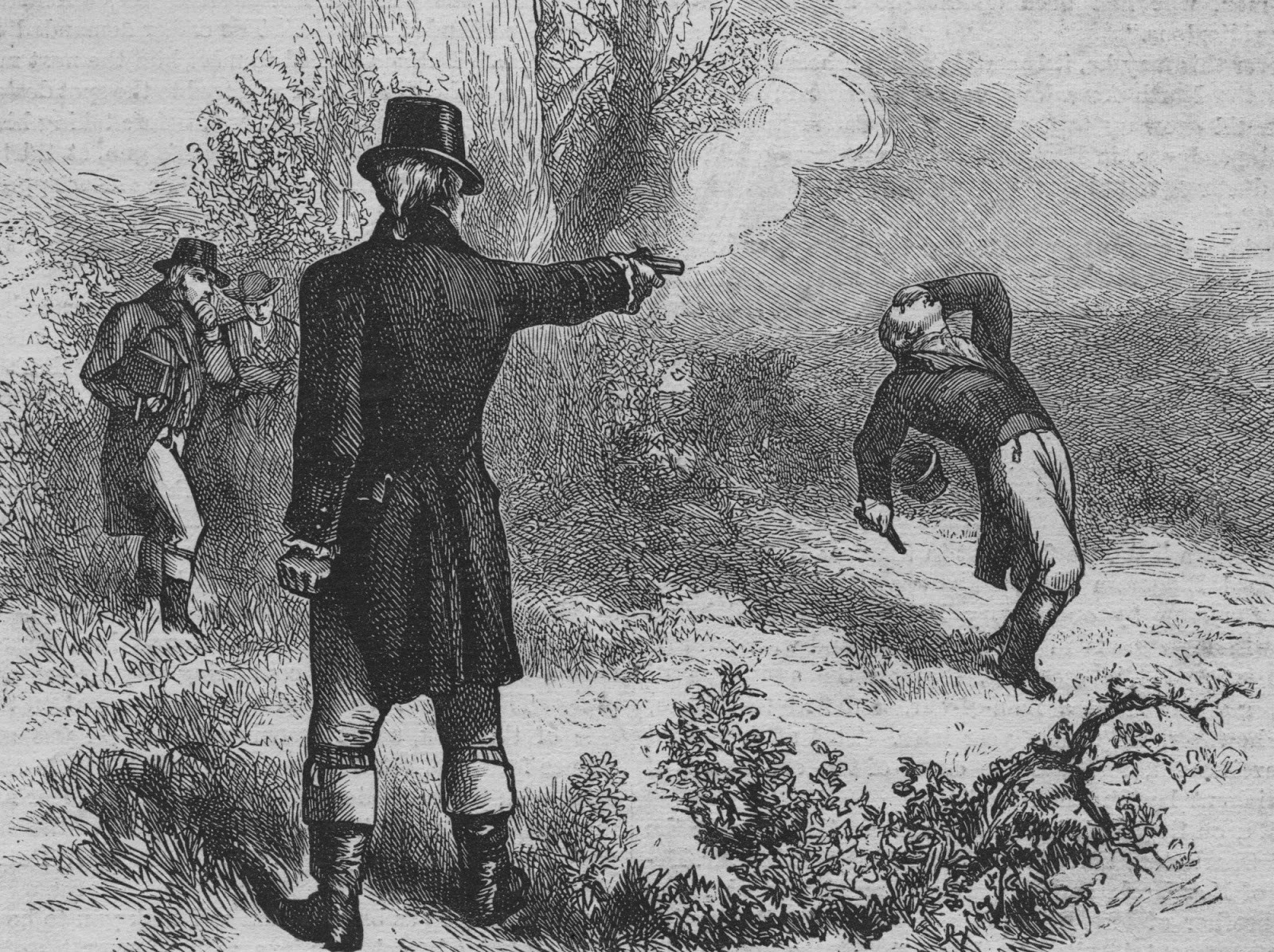The Deadly Duel on July 11, 1804
July 11, 2014

Posted by Diana Stanley, Museum Volunteer and Customer Service Representative
What does one do after being the Vice President of the United States? Some go on to become President or go back to Congress, others write books, or retire. Calvin Coolidge’s VP Charles Dawes wrote a popular song and John Breckinridge joined the Confederate army. Only one Vice President can claim the distinction of allegedly committing treason AND murder. His name? Aaron Burr.

Burr was a popular New York lawyer and politician. He served in the New York state legislature twice before going on to grander designs. Eventually he became Thomas Jefferson’s Vice President. Jefferson did not like Burr because of the nasty smear campaign Burr and his supporters used against Jefferson in the period's equivalent to party primaries. Jefferson had no intention of giving Burr any real power and obviously wanted to drop him from his ticket in the next election.
With not much else to do, Burr ran for governor of New York. The state had a lot of secessionist sympathizers and it is suggested that Burr promised to withdraw New York from the Union in exchange for the governor seat. Regardless of whether these rumors were true, Alexander Hamilton believed them. Hamilton was a brilliant economist and one of the most important Founding Fathers. He was the first Secretary of the Treasury, one of the writers of the Federalist Papers, and Aaron Burr’s arch nemesis. The two politicians hated each other. Hamilton, with the help of New York governor George Clinton, campaigned for a little known politician Morgan Lewis. Burr lost by a landslide. In fact, percentage wise, Burr lost more than any other politician in the New York’s governor race’s history. Needless to say, he was angry with Hamilton.
|
|
|
Alexander Hamilton is on the $10 bill. |
Burr’s response was to challenge Hamilton to a duel. Duels were illegal, but people still had them. It took place on July 11, 1804. Hamilton did not want fight Burr; he only accepted the duel because he was a gentleman. When it came time for Hamilton to shoot, he purposefully missed and aimed for a tree branch. Burr did not share Hamilton’s sentiments. He shot him in the stomach. Hamilton died the day after. Ironically, Hamilton’s tragic death took place in the same place his son Philip died dueling only a few years earlier. Even though Burr was never prosecuted for the crime, it ended his career. America was appalled by Hamilton’s death. Still in his forties, even his political enemies acknowledged he was a valued asset of the early country. The popular outcry was enormous.
|
|
|
Duel between Aaron Burr and Alexander Hamilton |
Aaron Burr had yet to attempt his most ambitious project; he wanted to start his own country. Burr tried to break off part of the Louisiana Purchase with the help of planters and politicians. United States District Attorney Jo Daviess, who became famous later for his participation in the Battle of Tippecanoe, wrote President Jefferson, warning him of the plot. Daviess’ accusations were dismissed until Burr was betrayed by his ally James Wilkinson, governor of the territory. Wilkinson sent Jefferson a letter Burr had sent to him. Enraged, Jefferson made a warrant out for Burr’s arrest for treason. While Burr was eventually acquitted of the crime, he went to Europe afterward to avoid the scandal. Burr would spend the next several years there. He was up to his usual tricks, attempting to get support for a revolution in Mexico.
|
|
|
Aaron Burr on trial. |
Visit the Museum to learn more about our founding fathers in Founding of America and the President's Hall. Please visit our website or call 316.263.1311 for more information.



